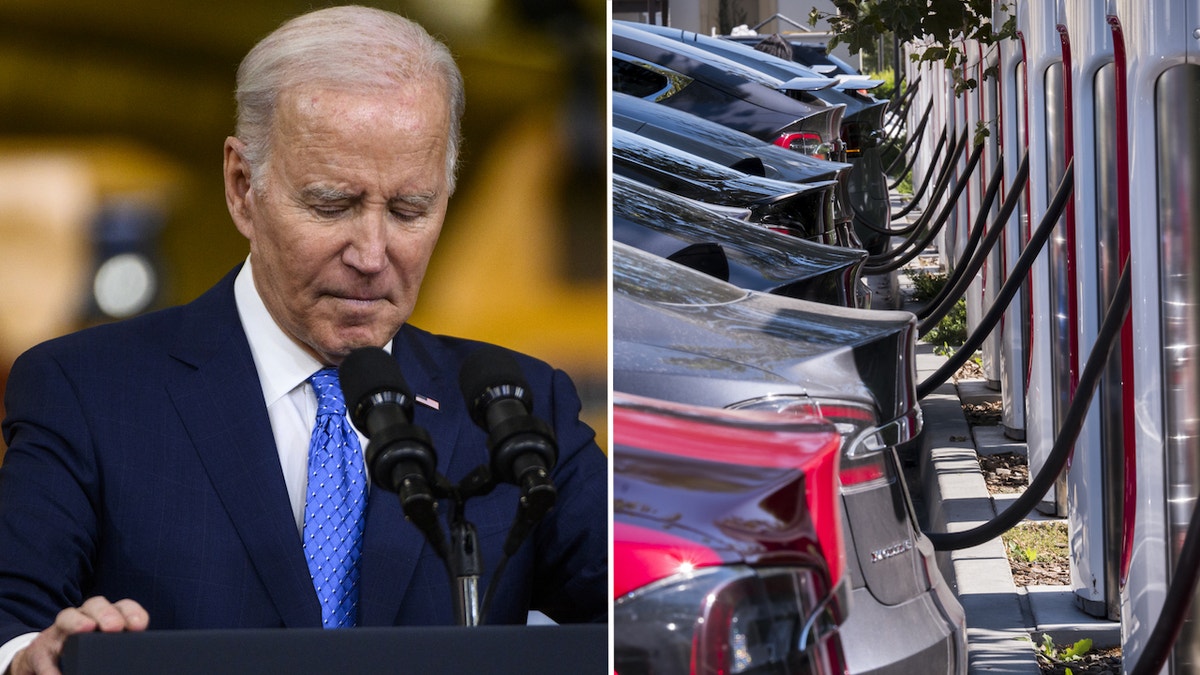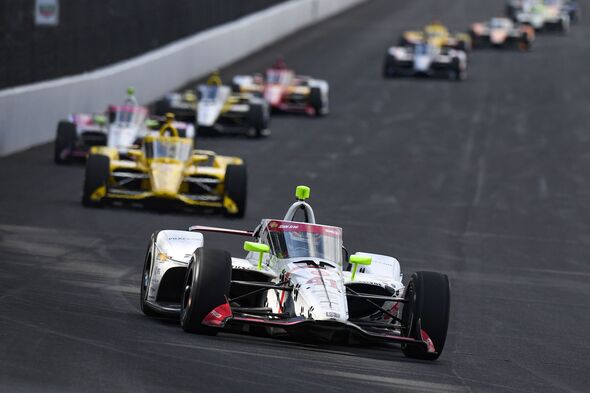EV Mandate Backlash: Car Dealerships Renew Their Resistance

Table of Contents
Economic Concerns Fueling the EV Mandate Backlash
The economic implications of EV mandates are a primary driver of the backlash from car dealerships. The transition requires substantial investment and carries significant financial risks.
High Initial Investment Costs
Adapting to an EV-centric sales model necessitates considerable upfront investment for dealerships. This includes:
- Charging station installation: Setting up Level 2 and potentially Level 3 charging stations requires significant capital expenditure, particularly for larger dealerships. Costs can range from several thousand to tens of thousands of dollars per station, depending on power requirements and installation complexity.
- Specialized tools and equipment: Maintaining and repairing EVs requires different tools and training compared to internal combustion engine (ICE) vehicles. This translates into investments in new diagnostic equipment, specialized software, and training for mechanics.
- Employee training: Dealership staff needs specialized training to understand EV technology, sales processes, and customer needs, adding to the overall costs.
- Inventory changes: Dealerships must invest in EV inventory, which might sit unsold longer than ICE vehicles due to lower consumer demand in certain markets, tying up capital.
While some government incentives and funding programs exist to support this transition, they often fall short of covering the total costs, leaving many dealerships with a significant financial burden. These programs often have eligibility requirements or limitations that restrict access for many dealerships.
Reduced Profit Margins on EVs
Currently, profit margins on EVs are often lower than those on gasoline-powered vehicles. This disparity stems from several factors:
- Lower service revenue: EVs have fewer moving parts, resulting in less frequent and less extensive maintenance compared to ICE vehicles, significantly impacting service revenue for dealerships.
- Higher upfront costs: The higher purchase price of EVs often translates to less profit margin for dealerships due to tighter pricing competition.
- Increased competition: The EV market is becoming increasingly competitive, with new entrants and established brands battling for market share, leading to pressure on pricing.
These reduced profit margins directly impact dealership revenue and profitability, making the transition to EVs a challenging proposition for many businesses.
Uncertain Future Demand
The future adoption rate of EVs remains uncertain. Several factors contribute to this uncertainty:
- Market volatility: The EV market is subject to rapid technological advancements, evolving consumer preferences, and shifts in government policies, making long-term predictions difficult.
- Consumer hesitancy: Many consumers remain hesitant about switching to EVs due to factors like range anxiety, charging infrastructure limitations, and higher initial purchase prices.
- Potential for technological disruptions: Breakthroughs in battery technology or alternative powertrains could disrupt the current EV market trajectory, impacting investment decisions for dealerships.
This uncertainty surrounding future EV demand makes it difficult for dealerships to justify significant investments in infrastructure and training without a guarantee of sufficient return.
Infrastructure Challenges and the EV Mandate Backlash
Beyond economic concerns, several infrastructural challenges fuel the EV mandate backlash.
Lack of Adequate Charging Infrastructure
The limited availability of public and private charging stations poses a significant barrier to widespread EV adoption. This is particularly true in rural areas and underserved communities, where charging infrastructure is often insufficient or non-existent. This lack of infrastructure creates range anxiety for potential EV buyers and ultimately hinders sales.
- Geographical disparities: Charging stations are heavily concentrated in urban areas, leaving rural communities significantly underserved.
- Challenges in rural areas: The cost of installing charging infrastructure in rural areas is often prohibitive due to lower population density and higher installation costs.
Grid Capacity Concerns
The massive increase in EV charging demand presents significant challenges for electricity grids. The existing grid infrastructure may not be capable of handling the increased load, potentially leading to power outages and instability.
- Potential power outages: A surge in simultaneous charging could overwhelm local grids, leading to power disruptions.
- The need for grid upgrades: Significant investments are required to upgrade and expand the electricity grid to accommodate the increased demand from EVs.
- Cost of grid expansion: Upgrading the grid is expensive and the costs are likely to be passed onto consumers in the form of higher electricity bills.
Repair and Maintenance Expertise Gaps
The repair and maintenance of EVs require specialized knowledge and tools, creating a skills gap in the current automotive workforce.
- Differences in EV and ICE vehicle repairs: EV repair differs significantly from ICE vehicle repair, requiring technicians to be proficient in high-voltage systems, battery management, and other specialized areas.
- Necessary training for technicians: Dealerships need to invest significantly in training their technicians to acquire the necessary skills for EV maintenance and repair.
Regulatory Hurdles and the EV Mandate Backlash
Navigating the complex and evolving regulatory landscape surrounding EVs adds to the challenges faced by dealerships.
Complex Regulations and Compliance Costs
Dealerships face a significant burden in complying with the various regulations related to EV sales, charging, and maintenance. These regulations are often complex and constantly changing, leading to increased compliance costs.
- Examples of complex regulations: Regulations related to emissions standards, safety standards, charging infrastructure requirements, and data privacy.
- Compliance costs: These regulations lead to substantial costs associated with legal advice, compliance audits, and system updates to meet regulatory requirements.
Lack of Standardized Regulations
Inconsistencies in EV regulations across different states or regions create further difficulties for dealerships. The lack of standardization makes it difficult to plan investments and adapt operations consistently across different markets.
- Variations in charging standards: Different states may adopt different charging standards, creating compatibility issues and additional costs for dealerships.
- Emissions regulations across different states: Variations in emissions regulations across states can add complexity to inventory management and sales strategies.
Conclusion: Navigating the EV Mandate Backlash
The EV mandate backlash reflects genuine concerns among car dealerships regarding the economic, infrastructural, and regulatory challenges associated with the rapid transition to electric vehicles. High initial investment costs, reduced profit margins on EVs, uncertain future demand, inadequate charging infrastructure, grid capacity limitations, skills gaps in EV repair, complex regulations, and a lack of standardized regulations all contribute to this resistance.
Addressing this EV mandate backlash requires a collaborative approach. Government incentives tailored to the specific needs of dealerships, increased investment in charging infrastructure, programs to upskill the automotive workforce, and the creation of clear and standardized regulations are crucial steps. Collaboration between dealerships, manufacturers, and policymakers is essential to ensure a smooth transition to electric vehicles while mitigating the challenges faced by car dealerships. Understanding the nuances of the EV mandate backlash is crucial for creating effective policies that support the transition to electric vehicles while mitigating the challenges faced by car dealerships. Stay informed about developments in the EV industry and participate in the discussion to help shape a sustainable and equitable future for the automotive sector.

Featured Posts
-
 Saturdays Partial Solar Eclipse In New York City What Time And How To Watch
May 05, 2025
Saturdays Partial Solar Eclipse In New York City What Time And How To Watch
May 05, 2025 -
 The Closure Of Anchor Brewing Company A Look Back At 127 Years Of History
May 05, 2025
The Closure Of Anchor Brewing Company A Look Back At 127 Years Of History
May 05, 2025 -
 Stefano Domenicali The Driving Force Behind Formula 1s Global Expansion
May 05, 2025
Stefano Domenicali The Driving Force Behind Formula 1s Global Expansion
May 05, 2025 -
 Body Positivity And Fitness Lizzos Trainer Responds To Critics
May 05, 2025
Body Positivity And Fitness Lizzos Trainer Responds To Critics
May 05, 2025 -
 The Lizzo Britney Janet Debate A Deep Dive Into Fan Opinions
May 05, 2025
The Lizzo Britney Janet Debate A Deep Dive Into Fan Opinions
May 05, 2025
Latest Posts
-
 Exploring A Fox 2 Simulcast Red Wings And Tigers Games Together
May 05, 2025
Exploring A Fox 2 Simulcast Red Wings And Tigers Games Together
May 05, 2025 -
 Detroit Sports Fans Rejoice Potential Fox 2 Red Wings And Tigers Simulcast
May 05, 2025
Detroit Sports Fans Rejoice Potential Fox 2 Red Wings And Tigers Simulcast
May 05, 2025 -
 Indy Car And Fox A Partnership For The Future Of Motorsports
May 05, 2025
Indy Car And Fox A Partnership For The Future Of Motorsports
May 05, 2025 -
 Indy Cars Inaugural Season On Fox Schedule Drivers And Key Storylines
May 05, 2025
Indy Cars Inaugural Season On Fox Schedule Drivers And Key Storylines
May 05, 2025 -
 Will Fox 2 Simulcast Detroit Red Wings And Tigers Games
May 05, 2025
Will Fox 2 Simulcast Detroit Red Wings And Tigers Games
May 05, 2025
